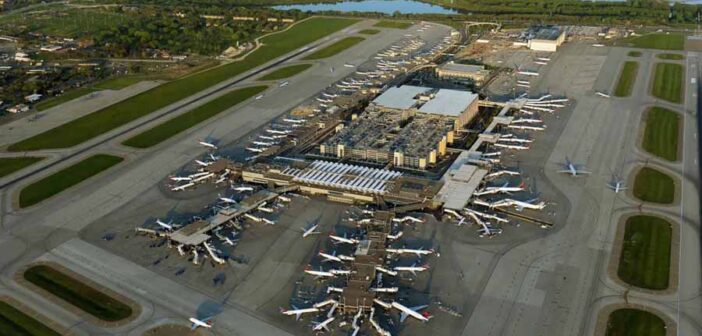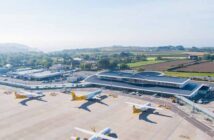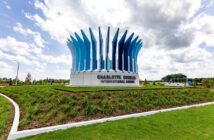Minneapolis-St. Paul International Airport, known as MSP, serves as the primary gateway to Minnesota’s Twin Cities, located 11 kilometres south of downtown Minneapolis and St. Paul. Handling 37.2 million passengers in 2024, this major hub for Delta Air Lines, which accounts for 65% of its traffic, connects to 163 nonstop destinations with airlines like Sun Country, Southwest, and United. Its two-terminal layout, modern amenities, and excellent transport links offer a practical experience for travellers exploring the region or connecting globally.
The passenger experience at MSP is generally efficient, earning it a top ranking for customer satisfaction among mega airports in a 2024 JD Power survey. Terminal 1 (Lindbergh), with seven concourses (A to G) and 117 gates, handles most flights, while Terminal 2 (Humphrey), with 14 gates in Concourse H, serves low-cost carriers like Southwest and JetBlue. Check-in and security typically take 20 to 30 minutes, but peak times, such as mornings or holidays, can see queues extending to 45 minutes, especially in Terminal 1’s Concourse D.
Passengers are advised to arrive two hours early for domestic flights and three for international to account for security and immigration. A tram in Terminal 1’s Concourse C and moving walkways in A, C, and G ease long walks, though Concourse D’s length can challenge some travellers. Accessibility is strong, with ramps, lifts, and wheelchair assistance, though pre-booking with airlines is recommended. Signage is clear, but Terminal 2’s smaller size can feel crowded, with limited seating noted by passengers.
Access to the airport is straightforward, with multiple transport options. The METRO Blue Line light rail connects both terminals to downtown Minneapolis in 25 minutes for £2, with free transfers between terminals. From downtown St. Paul, passengers can take the Green Line to US Bank Stadium Station and transfer to the Blue Line. Bus Route 54, operating from Terminal 1, reaches St. Paul in about 30 minutes for £2, though Terminal 2 passengers must use the free LRT to access it.
Taxis cost £31 to £49 to downtown Minneapolis or St. Paul, while Uber and Lyft pick up from Terminal 1’s Green/Gold parking ramps or Terminal 2’s Purple ramp, averaging £22. Car rental agencies, including Avis and Hertz, are located in Terminal 1’s Silver ramp and Terminal 2’s Purple ramp. The drive to downtown via Highway 5 or I-494 takes 15 to 30 minutes, though winter snow or construction on the A51 can add delays. Parking options include Green, Blue, and Red ramps at Terminal 1, and Orange and Purple ramps at Terminal 2, with pre-booking available online from £15 per day.
The airport’s layout is clear but requires planning due to the 3-mile separation between terminals, connected only by the free LRT, which runs every 10 to 15 minutes. Terminal 1’s concourses form a loop around parking facilities, with Concourses A, B, and C being the longest, though trams and walkways assist navigation. Terminal 2’s single Concourse H is compact but can feel congested.
Security checkpoints are located in Terminal 1’s Level 2 and Terminal 2’s Level 1, with TSA PreCheck and CLEAR lanes available to expedite screening. During peak seasons, congestion at Terminal 1’s security or international arrivals in Concourse G can slow progress, so checking wait times on the MSP website is advised.
Dining and retail options are plentiful, particularly in Terminal 1’s Airport Mall. Eateries include local favourites like French Meadow Bakery, serving organic dishes, and Surdyk’s Flights for gourmet meals, alongside chains like Starbucks and Chick-fil-A, open from 4:00 AM to 10:00 PM. Terminal 2 offers fewer options, with basic cafes and a small duty-free shop for international travellers. Duty-free in Terminal 1 stocks luxury goods and local souvenirs, though prices are higher than in the city. Travellers recommend dining in Minneapolis for more variety. Free Wi-Fi, via the “MSP Free Wi-Fi” network, is reliable, and charging stations are abundant.
Facilities cater to diverse needs. No luggage storage is available, but baggage wrapping costs £9. Five lounges in Terminal 1, including Delta Sky Club and Escape Lounge, offer showers, snacks, and Wi-Fi for £20 to £45, with some accessible via Priority Pass. Terminal 2 lacks lounges. A children’s play area near Concourse E and nursing rooms support families. Currency exchange and ATMs are available, and a 24/7 medical clinic operates in Terminal 1. Smoking is restricted to outdoor areas at Terminal 2’s arrivals and departures levels. The InterContinental Hotel, connected to Terminal 1 via a skyway, offers rooms from £89, though its TSA checkpoint is closed, requiring shuttle use for departures. The airport operates 24/7, but armrest-equipped seating limits overnight comfort.
On-time performance is generally strong, with real-time updates available via the MSP website or Flightradar24. Delays, averaging 15 to 30 minutes, are often caused by winter snowstorms, high passenger volumes, or air traffic control issues. The airport’s single-runway operations can also contribute during peak times. EU regulations allow up to €600 compensation for delays over three hours if airline-related.
Connections are efficient in Terminal 1, with Delta’s hub facilitating minimum connection times of 45 minutes for domestic and 75 minutes for international flights. Transfers between terminals via LRT take 5 to 10 minutes, though passengers must re-clear security if exiting the secure area. Terminal 2’s point-to-point focus means fewer connections, so checking airline and terminal details is key to avoid delays.




